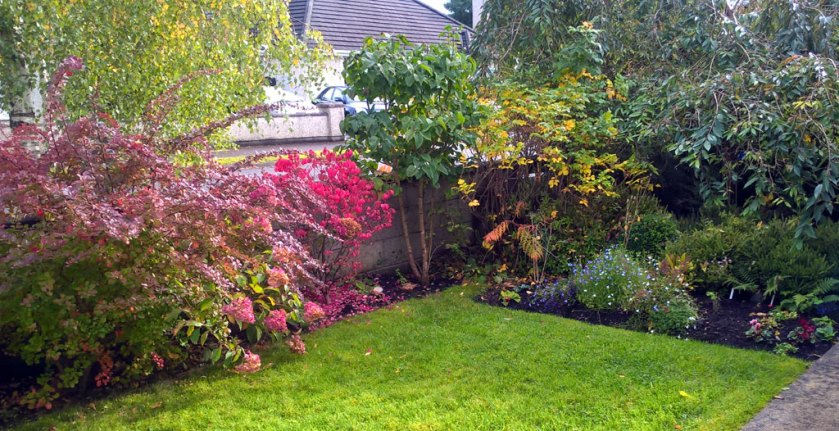
I have written before about our Japanese Maple Acer palmatum ‘Orange Dream’ which was happily growing in our back garden after being transferred from its unhappy location in the north-facing and windy front garden. When we bought it originally as a tiny plant its projected growth was five feet, it is now about 15 feet and still heading skywards. I have always been afraid to prune it so it has had its own way. I love its colour and shape and as you brush pass it there is a lovely softness to its leaves. It brings a glow to that rather dark part of the garden.

It has now outgrown its protector, the robust holly, and is way above the high back wall. And here lies the problem. As soon as it reached above the wall it was prey to cold and swirling winds. First, all the growing tips got shredded, but more seriously, the prevailing wind has the effect of making one of its three main stems to grow almost horizontally. This has created a gap in the centre of the tree as the stems splay outwards, and the worst offending branch was lying flat on the currant bushes.
I thought of propping up the branch, but it was not feasible as the branch was too strong and too set on its course. Then I considered the extreme solution of pruning the whole branch back to the main stem once it was dormant in the winter. I sought advice at The Irish Garden stand at the Bloom Festival, the professional gardener advised me to prune it in summer when it had a better chance of survival. With great trepidation I have taken the pruning saw and removed the horizontal branch. I am hoping it will heal itself over the summer. The two remaining stems are still way above the wall so this problem remains.
























